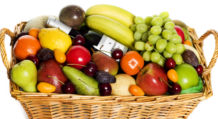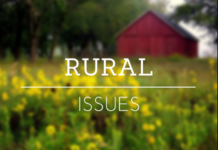Government modernizes the Thrifty Food Plan to benefit those eligible for SNAP
MANHATTAN, Kan. – A Kansas State University nutrition specialist said that the U.S. government’s recent decision to review food assistance for families provides a big boost for good health and reducing hunger.
This summer, the U.S. Department of Agriculture announced that it would be increasing the benefit to individuals who qualify for the Thrifty Food Plan (TFP) – available through the Supplemental Nutrition Assistance Program (SNAP) — by $36 per person per month. The changes go into effect on October 1.
Sandy Procter, an assistant professor in K-State’s Department of Food, Nutrition, Dietetics and Health, said the Thrifty Food Plan plays a critical role in calculating SNAP benefit amounts. By law, the cost of the TFP in June each year is equal to the maximum SNAP benefit for a household of four people for the following October through September.
That amount is then adjusted to determine the maximum benefit for households of other sizes.
“That increase is going to allow quite a lot of purchases, depending of course on what you’re buying, how you plan your meals and what is available in the store,” Procter said.
The Thrifty Food Plan is the lowest of four levels that the USDA uses to describe how much it can cost for Americans to eat a healthy diet. The others – in ascending order of cost — are low-cost, moderate-cost and liberal food plans.
The 2018 Farm Bill directed USDA to re-evaluate the Thrifty Food Plan so that it provides appropriate benefits to families at all income levels. The changes that will be implemented on Oct. 1 signal the first time since 2006 that the USDA has changed the food plans.
“We hear almost every year that there is a need for more money for SNAP programs,” Procter said. “What this year’s changes do is look at the other side; they are looking at the actual cost of what it takes to feed your family healthfully today.”
The USDA used four factors to calculate the increased assistance:
• The cost of food.
• Nutrients in food.
• Current nutrition guidance.
• What Americans eat.
“They (USDA) needed to see how accurate our assumptions of the ‘usability’ of the healthy food plan was from what was actually happening and what food was accessible to people living at the lowest economic level,” Procter said.
“For those living at the lowest (economic) level, it’s very difficult to afford the healthy choices that are recommended in the dietary guidelines. When lower-income families or others are not able to afford healthier foods, we are building the problem, rather than erasing it.”
More information about the Thrifty Food Plan and other income levels affected by USDA’s changes is available online.
The changes, Procter notes, are “like a cost of living adjustment that will help families that need added income for food and to make healthy choices. And it really is long overdue because we know how food prices have escalated in the past few months, let alone the past 15 years since the plan was last adjusted.”
In Kansas, more information on SNAP is available through the Kansas Department for Children and Families. Procter said many extension agents also can provide guidance or direct Kansans to the state’s SNAP-Ed program, which provides recipes and education on healthy eating and managing a limited food budget.
The Supplemental Nutrition Assistance Program Education (SNAP-Ed) is supported by a USDA grant, in partnership with the Kansas Department for Children and Families.
-30-
FOR PRINT PUBLICATIONS: Links used in this story
Supplemental Nutrition Assistance Program (SNAP), www.fns.usda.gov/snap/supplemental-nutrition-assistance-program
Dietary Guidelines for Americans, www.dietaryguidelines.gov
K-State Department of Food, Nutrition, Dietetics and Health, www.hhs.k-state.edu/fndh
The Thrifty Food Plan: What it is and why it matters (USDA), www.usda.gov/media/blog/2021/08/12/thrifty-food-plan-what-it-and-why-it-matters
K-State Research and Extension statewide offices, www.ksre.k-state.edu/about/statewide-locations.html
Kansas SNAP-Ed, https://www.hhs.k-state.edu/ks-snaped
K State Research and Extension is a short name for the Kansas State University Agricultural Experiment Station and Cooperative Extension Service, a program designed to generate and distribute useful knowledge for the well being of Kansans. Supported by county, state, federal and private funds, the program has county extension offices, experiment fields, area extension offices and regional research centers statewide. Its headquarters is on the K State campus in Manhattan. For more information, visit www.ksre.ksu.edu. K-State Research and Extension is an equal opportunity provider and employer.
Story by:
Pat Melgares
785-532-1160
[email protected]
For more information:
Sandy Procter
785-532-1675
[email protected]
For more information about Kansas SNAP-Ed:
Lisa Ross
[email protected]




